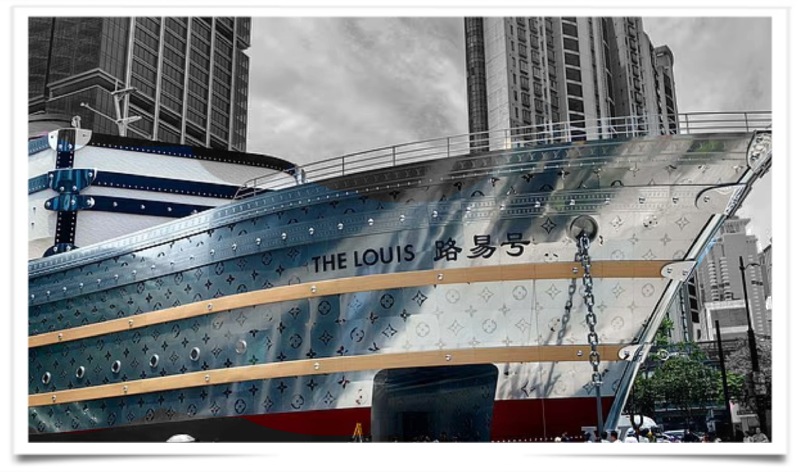
On Thursday, Louis Vuitton unveiled its latest showstopper in Shanghai: “Le Louis.” t’s not a new €15,000 plastic handbag—it’s worse! “Le Louis” is a brand-new “cultural monument” where exhibitions, gastronomy, and of course retail coexist—essentially a Disneyland-style cathedral of consumerism disguised as a temple of art.
Here we have a form of luxury that asserts itself as a diplomatic power, colonizing the cultural space while wrapping it in grained leather sponsored by Shanghainese elites, all serving as a glamorous showcase for a triumphant capitalism that quietly helps sugarcoat the Uyghur repression.
This event is far from trivial. If Louis Vuitton erects such a monument in China, it’s not out of love for calligraphy or cultural philanthropy. It’s strategic. China, with its millions of logo-obsessed consumers—like all nouveau riche—is a cash cow, fickle perhaps, but immensely valuable. In 2024, the Asia-Pacific region (excluding Japan) represented 27.5% of LVMH’s revenue. And within that region, mainland China accounted for nearly 80%. Do the math: without China, the luxury giant teeters.
Yet, Chinese soil is no longer as firm. The market is showing signs of fatigue, with sluggish growth and complex geopolitical tensions. But no matter: they build, they invest, they embellish. Planting a Vuitton flag in Shanghai’s concrete serves as a reminder that while demand may fade, luxury as an idea is eternal.
What Louis Vuitton calls culture is, at heart, just a facade; artworks are exhibited, “conceptual” cuisine is served, there’s talk of heritage and craftsmanship. In reality, it all converges toward a single goal: the act of purchase, laid out like an immersive theme park experience—with boutiques waiting at the exit.
So what remains when you scratch off the polish? A giant building monuments to its own glory in countries where it senses the tide shifting, and an industry that, under the guise of prestige, executes a conquest strategy that is methodical, refined, and utterly cynical.
FM
